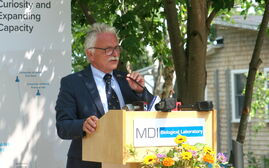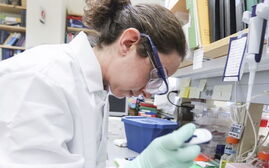Processing Your Payment
Please do not leave this page until complete. This can take a few moments.
- News
-
Editions
-
- Lists
-
Viewpoints
-
Our Events
-
Event Info
- Women's Leadership Forum 2025
- On the Road with Mainebiz in Bethel
- Health Care Forum 2025
- On The Road with Mainebiz in Greenville
- On The Road with Mainebiz in Waterville
- Small Business Forum 2025
- Outstanding Women in Business Reception 2025
- On The Road with Mainebiz in Bath
- 60 Ideas in 60 Minutes Portland 2025
- 40 Under 40 Awards Reception 2025
- On The Road with Mainebiz in Lewiston / Auburn
- 60 Ideas in 60 Minutes Bangor 2025
Award Honorees
- 2025 Business Leaders of the Year
- 2024 Women to Watch Honorees
- 2024 Business Leaders of the Year
- 2023 NextUp: 40 Under 40 Honorees
- 2023 Women to Watch Honorees
- 2023 Business Leaders of the Year
- 2022 NextUp: 40 Under 40 Honorees
- 2022 Women to Watch Honorees
- 2022 Business Leaders of the Year
-
-
Calendar
-
Biz Marketplace
- News
- Editions
- Lists
- Viewpoints
-
Our Events
Event Info
- View all Events
- Women's Leadership Forum 2025
- On the Road with Mainebiz in Bethel
- Health Care Forum 2025
- On The Road with Mainebiz in Greenville
- On The Road with Mainebiz in Waterville
- + More
Award Honorees
- 2025 Business Leaders of the Year
- 2024 Women to Watch Honorees
- 2024 Business Leaders of the Year
- 2023 NextUp: 40 Under 40 Honorees
- 2023 Women to Watch Honorees
- 2023 Business Leaders of the Year
- + More
- 2022 NextUp: 40 Under 40 Honorees
- 2022 Women to Watch Honorees
- 2022 Business Leaders of the Year
- Nomination Forms
- Calendar
- Biz Marketplace
Where will Maine's STEM students go to work?
 Photo / Courtesy MDI Biological Laboratory
Isaiah Mansour, a University of Maine, Orono, senior, studying the roundworm C. elegans in 2016 as an MDI Biological Laboratory summer fellow.
Photo / Courtesy MDI Biological Laboratory
Isaiah Mansour, a University of Maine, Orono, senior, studying the roundworm C. elegans in 2016 as an MDI Biological Laboratory summer fellow.
Amid the recent buzz of entrepreneurs at Maine Startup and Create Week, I talked to Kevin Strange, president of the MDI Biological Laboratory in Bar Harbor, about his take on entrepreneurship and STEM education in the state.
Strange quickly focused on the incubator of five startup companies MDIBL has attracted to the campus, and how those entrepreneurs might cross-pollinate information with scientists at the lab and elsewhere to piqued their interest in starting companies or commercializing their research. He also talked about programs to give high school and college students hands-on experience at the lab so they can see if science is a career for them.
His approach is to get at students early. There are various internships to get students on campus, but he also wants to leverage INBRE, the IDeA Network of Biomedical Research Excellence, which is a collaborative network of more than a dozen Maine educational and research institutions sponsored by the National Institutes of Health. INBRE aims to create a technically skilled workforce, and Strange wants to assure that includes interacting with businesses that eventually could hire the students.
Maine is better at attracting students to STEM disciplines, but “the problem is work and opportunity for them to keep them in the state,” he said. Strange pointed to University of Maine, Orono, senior Isaiah Mansour, a double major in marine biology and aquaculture, as an example of a student who he'd like to nurture at the lab, and potentially see start a company.
Mansour is now working with Rebecca Morrison, the laboratory manager of the Strange research lab, to oversee his work in adjuvants, which are agents added to a vaccine to help it amplify the body's immune response.
Mansour said one California company has developed an adjuvant using a sea snail, but it is high priced because the sea snail it uses is in short supply. He is looking for an alternative using a more broadly available sea snail, red abalone. That snail is in the wild and has been grown in an aquaculture setting at the University of Maine.
While the red abalone blood can potentially be used for the new adjuvant, the entire snail also can be used. “The meat is a delicacy and the shell can be used for mother-of-pearl jewelry,” he said.
Mansour already has isolated the potential adjuvant, and is working on the next step, purifying and analyzing its two components, at MDIBL.
If successful with the red abalone adjuvant, Mansour said he'd like to stay in research, but with business courses under his belt, he'd like to start a company and potentially join MDIBL's existing incubator.
When Mansour talks to his peers, the issue isn't a matter of interest in STEM subjects, but what happens later.
“There are tons of STEM students in Maine,” the Connecticut native said. “We need to foster a job market to keep the students in Maine. Labs and companies should work together.”
He added, “Every science student in Maine helps create a community that could help develop the fledgling entrepreneurial network.”













Comments